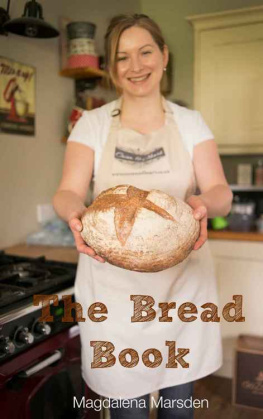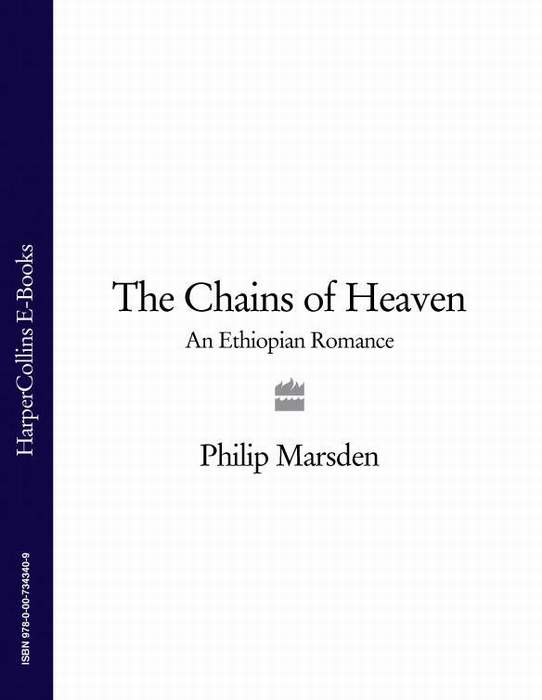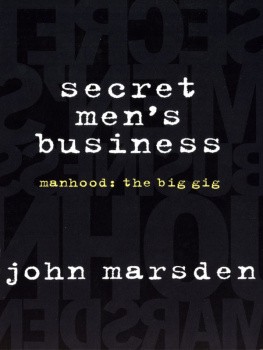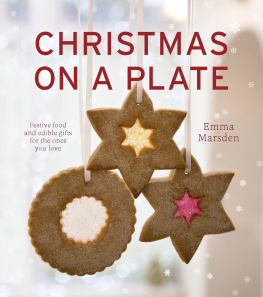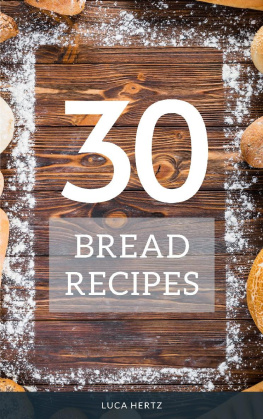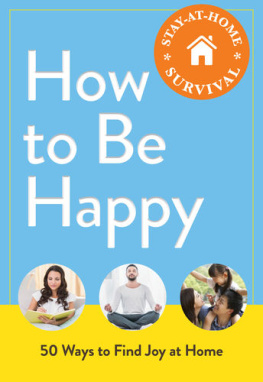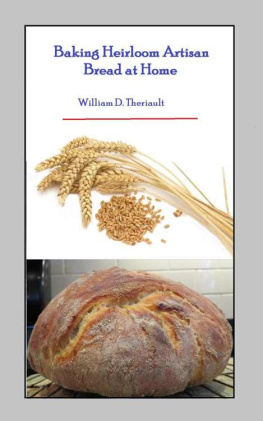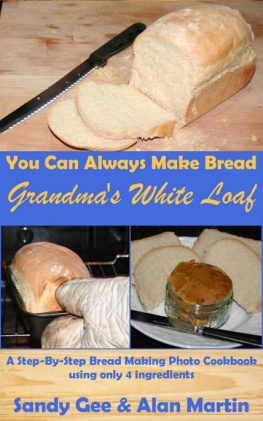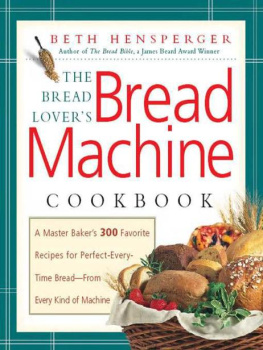Marsden - The Bread Book How to make that perfect loaf every time!
Here you can read online Marsden - The Bread Book How to make that perfect loaf every time! full text of the book (entire story) in english for free. Download pdf and epub, get meaning, cover and reviews about this ebook. year: 2015, publisher: Magdalena Marsden, genre: Home and family. Description of the work, (preface) as well as reviews are available. Best literature library LitArk.com created for fans of good reading and offers a wide selection of genres:
Romance novel
Science fiction
Adventure
Detective
Science
History
Home and family
Prose
Art
Politics
Computer
Non-fiction
Religion
Business
Children
Humor
Choose a favorite category and find really read worthwhile books. Enjoy immersion in the world of imagination, feel the emotions of the characters or learn something new for yourself, make an fascinating discovery.
- Book:The Bread Book How to make that perfect loaf every time!
- Author:
- Publisher:Magdalena Marsden
- Genre:
- Year:2015
- Rating:5 / 5
- Favourites:Add to favourites
- Your mark:
- 100
- 1
- 2
- 3
- 4
- 5
The Bread Book How to make that perfect loaf every time!: summary, description and annotation
We offer to read an annotation, description, summary or preface (depends on what the author of the book "The Bread Book How to make that perfect loaf every time!" wrote himself). If you haven't found the necessary information about the book — write in the comments, we will try to find it.
The Bread Book How to make that perfect loaf every time! — read online for free the complete book (whole text) full work
Below is the text of the book, divided by pages. System saving the place of the last page read, allows you to conveniently read the book "The Bread Book How to make that perfect loaf every time!" online for free, without having to search again every time where you left off. Put a bookmark, and you can go to the page where you finished reading at any time.
Font size:
Interval:
Bookmark:
The Bread Book Bread BakingTechniques
How to make that perfect loaf every time!
Magdalena Marsden
Please do not distribute this e-book to others. It is for your use only.
Copyright 2015 Magdalena Marsden. All Rights Reserved.
This e-book may not be copied, sold or distributed to any third party, in any format, without express written permission of the author.
You can contact the author, via email at:
Forwarding information:
Please be aware that forwarding this Ebook to a third party will be in breach of copyright. Instead, please direct them to the website at: www.cocoaandheart.co.uk so they may purchase a copy for themselves.
To Nick, my dearest husband, who bravely shared the first home baked bread with me more than 16 years ago.
To my mum, Jitka, who let me and my brother experiment in her kitchen when we were growing up and didnt mind the mess we made.
To Sham Samuel, whose beautiful pictures truly brought this book to life. Thank you for being so patient with me and taking on this project it means a lot!
To all my bread baking students who trusted me to take them through the bread baking step-by-step.
Thank you!
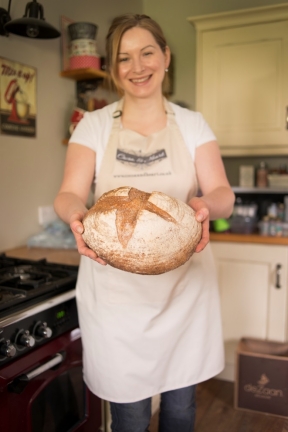
I can clearly remember when I baked my first bread. I was on my own at home and thought I would bake something more useful than just another cake. Dont get me wrong, cakes are good, but a bit tricky to use as packed lunches for work. (Now, theres a thought!)
I had been living in the UK for about a year or so and, even though I was trying to get used to the new environment and food, I was not particularly keen on supermarket bread. In those days there were no artisan bakeries certainly not in the part of London where we lived. I was missing our Czech traditional bread, which is based on rye flour and is made with caraway seeds and sourdough starter. The taste is very earthy, slightly tangy and the bread smells absolutely delicious.
So on that, rainy afternoon, I tried to recreate a bread recipe that I cut out from a magazine. It was a basic recipe and there werent many instructions, nor did it have any pictures. I had no idea how long I was supposed to knead the bread or how long I should leave it to prove and I didnt quite understand how to shape the bread either!
Well, Im not going to keep you in suspense it was a disaster!
The bread was dense with no crust, no lift and no crumbly texture, and whilst it was burnt on the outside, it was still soggy in the middle. The bread was hard like a rock, but the taste was fine and, in the end we actually ate it partly as a protest for not being defeated by a humble bread and also because I do hate to waste food!
But what this bread disaster meant was that I became even more determined to get it right next time. Fast forward 16 years and Im really proud to say that, since that disastrous bread day, I have not bought bread in a supermarket!
I took it as a personal challenge never to run out of bread. Even when I came home from a days work, I would get stuck in and knead a few loaves, enjoying the freshly baked bread later on.
Although I like cookery books, I find them equally frustrating because, apart from a few exceptions out there, they dont actually explain why you do things. If youre anything like me, unless somebody explains to me why I should knead my bread for 10 minutes, I tend to just mix it and stick it in the oven (incidentally thats exactly what I did all those years ago with my first bread). I need to understand why!
So, after running my bread baking workshops for over 3 years, I decided to pull together everything that I wished I had known when I started to bake bread and I hope you find it useful too!
Happy baking!
Magdalena
P.S. The main purpose of this book is to share with you all of my knowledge and bread baking techniques, the tricks of the home baking trade and, first and foremost, to give you the understanding of WHY.
Once you have this understanding, youll be able to pick any bread baking recipe and follow it with a success. If the recipe is not right, you will understand why and be confident to follow your instinct as a baker, correct it and make it work for you.
Because of that you wont find that many recipes in this book. I have included about 35 of my favourites, but they are really not that important in the overall scheme of this book. What is important though, is that you learn the techniques and then you will be able to bake any recipe that you already have at home successfully.
As you read through the first few pages, you might perhaps think that Im approaching bread baking very seriously, but as you will find out, there is a lot of leeway with bread baking, so just have a fun with it.
Whats the worst thing that can happen, anyway? Even my bread didnt end up in a bin all those years ago!
And finally Id love to know how you get on, so feel free connect with me on social media, post a picture of your latest bread bake or just to ask any questions. You will find all my contact details at the end of the book.
Ingredients
Lets start with the basics real bread only has flour, yeast, salt and water. There is no need for any other ingredients, but they can enhance the flavour of the bread, help with the crust and just make every day baking into something quite special.
For most bread recipes you need strong bread flour. Some recipes will call for plain (cake flour), but thats usually clearly written in the recipe.
So, when you are in your local supermarket, look out for Bread Flour or Strong White Flour, which is the best one to start with. The main difference between plain and bread flour is the amount of gluten. Average plain flour has about 12% gluten, but strong bread flour can be around 14% and more. As a rule of thumb, the stronger the flour, the better the structure and rise of the bread and, possibly better overall results. I say possibly as, even if you use strong Canadian Flour, but dont follow the right technique of kneading, shaping and adding enough water, you could still end up with an average result.
Why would you use plain flour? Some recipes, such as Panettone or soft rolls use plain flour to make the bread much lighter, softer, finer and less chewy. Plain flour wont hold much shape, so its perfect for smaller breads, rolls or anything baked in the tin, which support it. If you want to taste the difference, just use the basic white bread recipe and swap the flour for plain.
Thats entirely up to you! Wholemeal flour is definitely more nutritious than white, but sometimes can make a heavier loaf. Whats sold in supermarkets as a wholemeal bread is often wholemeal flour mixed with white. This together with dough improvers, e-numbers and vitamins, makes the loaf much lighter and not at all wholemeal.
Some mass produced breads labelled as brown breads are just made from white bread flour and the colour comes from dark molasses sugar. Im only saying this, because I dont want you to be disappointed when you make your first 100% wholemeal bread as its unlikely to be similar to those available in the supermarket and thats definitely a good thing! If youre used to lighter wholemeal bread, just mix the wholemeal with white and experiment with the proportions, until you find the ratio you like.
Really that depends on your preference and budget. As a side note however, the bread you make with even the cheapest supermarket white bread flour, is still going to be a million times better than the same white bread bought in the supermarket.
Font size:
Interval:
Bookmark:
Similar books «The Bread Book How to make that perfect loaf every time!»
Look at similar books to The Bread Book How to make that perfect loaf every time!. We have selected literature similar in name and meaning in the hope of providing readers with more options to find new, interesting, not yet read works.
Discussion, reviews of the book The Bread Book How to make that perfect loaf every time! and just readers' own opinions. Leave your comments, write what you think about the work, its meaning or the main characters. Specify what exactly you liked and what you didn't like, and why you think so.

